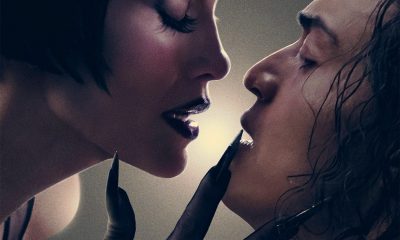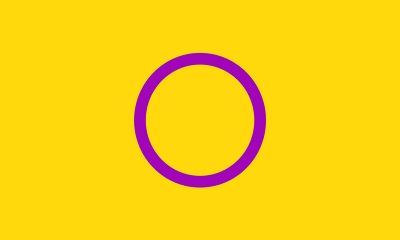Arts & Entertainment
Oscars so safe
Fraser wins for playing gay in ‘Whale,’ but night belonged to ‘Everything’
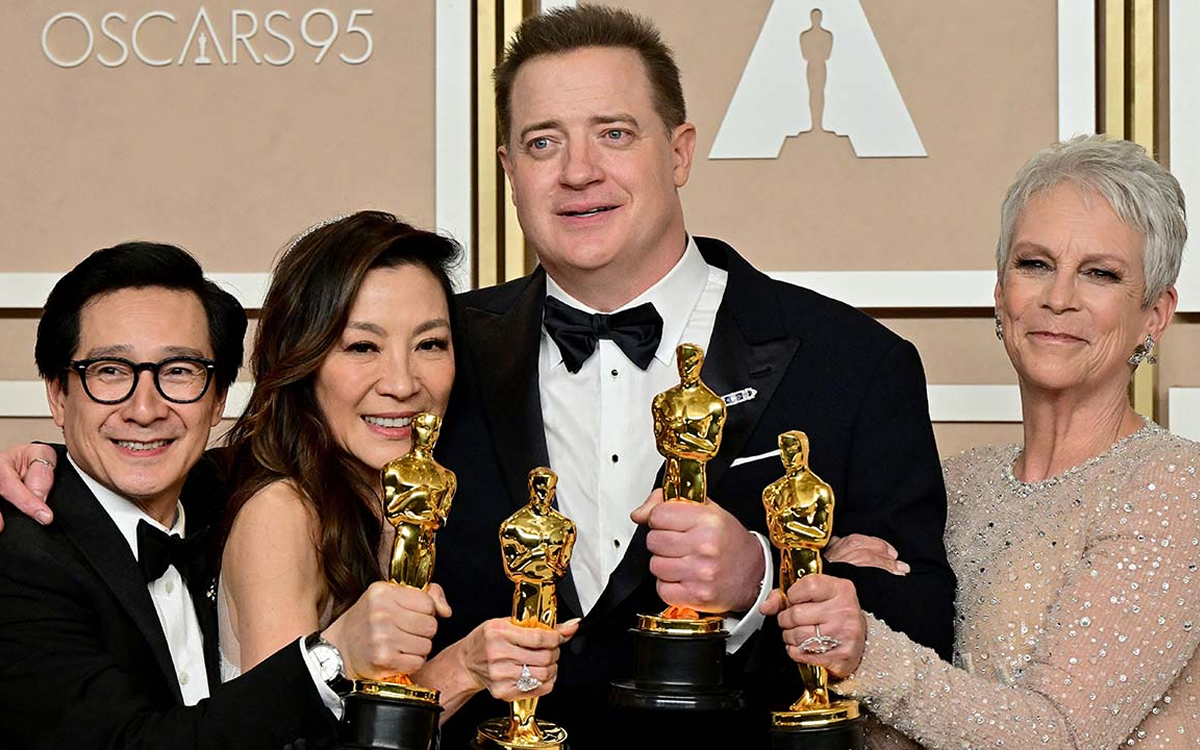
It must be said that the 95th Annual Academy Awards were doomed to be a letdown before they ever started. After all, last year’s ceremony included a physical assault on a presenter by an A-lister – who then proceeded to win the Best Actor award! Even by rewarding an indie underdog for becoming a populist hit by giving it a record-setting sweep of the major categories, how could this year’s Oscar broadcast hope to top that?
Snarky digs aside, the Academy had already squandered a lot of its good will by announcing a slate of nominees that seemed a step backward in its recent efforts toward diversity. While 2022’s honors included overdue recognition for Asian American talent, the notable shortage of people of color or LGBTQ individuals among the nominees had already led many observers to write off this year’s Oscars as just another backsliding return to the all-too-familiar status quo; and when the broadcast itself finally happened, the Jimmy Kimmel-led ceremony played it so safe that the proceedings seemed dull even in comparison to other Oscar shows – and as anyone who’s ever watched one will certainly attest, that’s saying a lot. It’s almost as if, after a few years of pushing the boundaries, controversy, and conservative backlash over a perceived capitulation to “woke” sensibilities had pressured the Academy into a return to business as usual.
In fairness, that assessment feels a little unreasonable, considering that “Everything Everywhere All at Once” – a movie in which the survival of multiple universes hinges in no small part on a mother’s acknowledgment and acceptance of her child’s queer sexuality – had enough critical and popular momentum going into the ceremony to make its claiming of the top prize all but inevitable. The popular surprise indie sci-fi hit claimed that prize and more – including Best Actress for cinema icon Michelle Yeoh and supporting honors for co-stars Ke Huy Quan and Jamie Lee Curtis, as well as wins in the Direction and Original Screenplay categories for filmmakers Daniel Scheinert and Daniel Kwan – to take home an impressive seven of the 11 awards for which it was nominated; child-actress-turned-celebrated-filmmaker Sarah Polley, while shut out of the Best Director category for “Women Talking” in favor of an all-male roster of nominees, took the prize for Best Adapted Screenplay nevertheless; Best Actor winner Brendan Fraser, while himself not gay, earned his victory for a deeply humanizing portrayal of a gay man and is a very public survivor of alleged same-gender sexual harassment in the workplace – a reminder that #MeToo is not just a “women’s issue” but a cause encompassing even those in positions most seemingly insulated from such abuses.
All these winning films – as well as numerous others among their fellow winners and nominees –are queer-inclusive, if not directly queer-focused. Though other queer nominees – like Belgian director Lukas Dhont’s “Close” for Best International Feature and Laura Poitras’ Nan Goldin profile “All the Beauty and the Bloodshed” for Best Documentary Feature – failed to take their respective categories, the overall queer presence represented in this year’s nominated films is too widespread and deeply integrated to be ignored.
Still, in today’s very divided cultural atmosphere, such equivocating overtures toward a more equitable Oscar playing field can undeniably feel like hollow, insincere tokens, convenient to bestow on their non-LGBTQ recipients thanks to the more universal appeal of the movies that earned them a place at the table; and while the wins for Yeoh and nostalgic Gen X fan favorite Quan represented historic firsts for Asian American inclusion, nominations for Viola Davis in “The Woman King” and “Till” star Danielle Deadwyler as Best Actress, or for Jeremy Pope and Gabrielle Union of “The Inspection” as Best Actor and Supporting Actress, respectively, would have gone a lot further toward proving the Academy’s commitment to true diversity than its loading of the stage with an ostentatiously multi-ethnic roster of presenters – an overcompensation tactic that becomes increasingly obvious every time they deploy it.
As for the ceremony itself, there were some highlights, such as Lady Gaga, with a face freshly scrubbed of her red carpet makeup, passionately delivering a performance of nominated song “Hold My Hand” from “Top Gun: Maverick,” or fellow pop diva Rihanna’s rendition of “Lift Me Up” from “Wakanda Forever” – not to mention the wildly entertaining production number staged to the eventual Best Song winner, “Naatu Naatu” from the Indian blockbuster “RRR.” So, too, were there memorable moments from among the presentations, like the infectious wave of authentic joy that met Quan’s and Curtis’ early wins or Fraser’s genuinely choked-up, self-effacing acceptance speech, as well as a few polite-but-pointed barbs and zingers aimed at various low-hanging political targets – and, of course, at Will Smith – along the way. Even so, the atmosphere of the evening was decidedly contained, marked by a frankly uncharacteristic effort from Hollywood’s elite to remain on their best behavior and avoid ruffling too many feathers – and while that may have made for an evening relatively free of controversy, it also resulted in an Academy Awards show arguably far less entertaining than some of the notoriously embarrassing debacles they’ve produced in past years.
With all that in mind, it’s easy to see Sunday night’s Oscar ceremony as just another validation for people who loathe the Oscars. Yet while the Academy might seem to be some monolithic organization handing out decrees, its awards are bestowed by a voting body made up of individual film professionals, each with their own opinions about who the winners should be, and many of whom likely feel no obligation toward following whatever cultural or political agendas the organization itself may be hoping to advance. That means that whatever good intentions it proclaims itself to have, the Academy will always be little more than a barometer – and, perhaps, a convenient scapegoat – for an industry that perpetually drags its feet. After all, can we really blame the Academy for failing to recognize queer-centric and queer-friendly content – or content centered on any demographic that isn’t white, male, and heterosexual – when there is still so little of it to choose from among the award-worthy movies the mainstream continues to offer us?
There’s no right answer to that question, perhaps, only food for thought as we continue to press Hollywood to do better; that’s the only way we’ll ever see wider inclusion on the big screen. In the meantime, it’s important to remember that deciding the “best” of anything is always an entirely subjective exercise, which means that the Oscars are ultimately less about gauging quality than they are about measuring cultural attitudes toward the content – and the way that content is presented – that the movie industry produces. That makes awards like the Oscars an invaluable tool, perhaps, but does that mean it’s worth putting up with all the shallow, facile, tribalistic conversation that inevitably happens around them?
In a year like this one, when the Academy honors films that uplift and celebrate outsiders, underdogs, and ordinary people, that emphasize kindness and compassion, that allow for resolution and redemption without destructive conflict or violence, then it feels like the answer is yes.
The complete list of winners is below:
Best Picture: “Everything Everywhere All at Once”
Best Actress in a Leading Role: Michelle Yeoh, “Everything Everywhere All at Once”
Best Actor in a Leading Role: Brendan Fraser, “The Whale”
Best Director: Daniel Kwan and Daniel Scheinert,“Everything Everywhere All at Once”
Actress in a Supporting Role: Jamie Lee Curtis, “Everything Everywhere All at Once”
Actor in a Supporting Role: Ke Huy Quan, “Everything Everywhere All at Once”
Best Animated Feature Film: “Guillermo del Toro’s Pinocchio”
Best Original Song: M.M. Keeravani and Chandrabose,“Naatu Naatu,” “RRR”
Best Original Screenplay: Daniel Kwan and Daniel Scheinert,“Everything Everywhere All at Once”
Best Adapted Screenplay: Sarah Polley, “Women Talking”
Best International Feature Film: “All Quiet on the Western Front”
Best Documentary Feature Film: “Navalny”
Best Cinematography: James Friend, “All Quiet on the Western Front”
Best Visual Effects: “Avatar: The Way of Water”
Best Costume Design: Ruth E. Carter, “Black Panther: Wakanda Forever”
Best Makeup and Hairstyling: Adrian Morot, Judy Chin, and Annemarie Bradley, “The Whale”
Best Production Design: Christian M. Goldbeck and Ernestine Hipper,“All Quiet on the Western Front”
Best Film Editing: Paul Rogers, “Everything Everywhere All at Once”
Best Original Score: Volker Bertelmann,“All Quiet on the Western Front”
Best Live Action Short: “An Irish Goodbye”
Best Animated Short: “The Boy, the Mole, the Fox and the Horse”
Best Documentary Short: “The Elephant Whisperers”
Best Sound: “Top Gun: Maverick”
Movies
Long-awaited ‘Pillion’ surpasses the sexy buzz
A film to admire from a promising new queer director
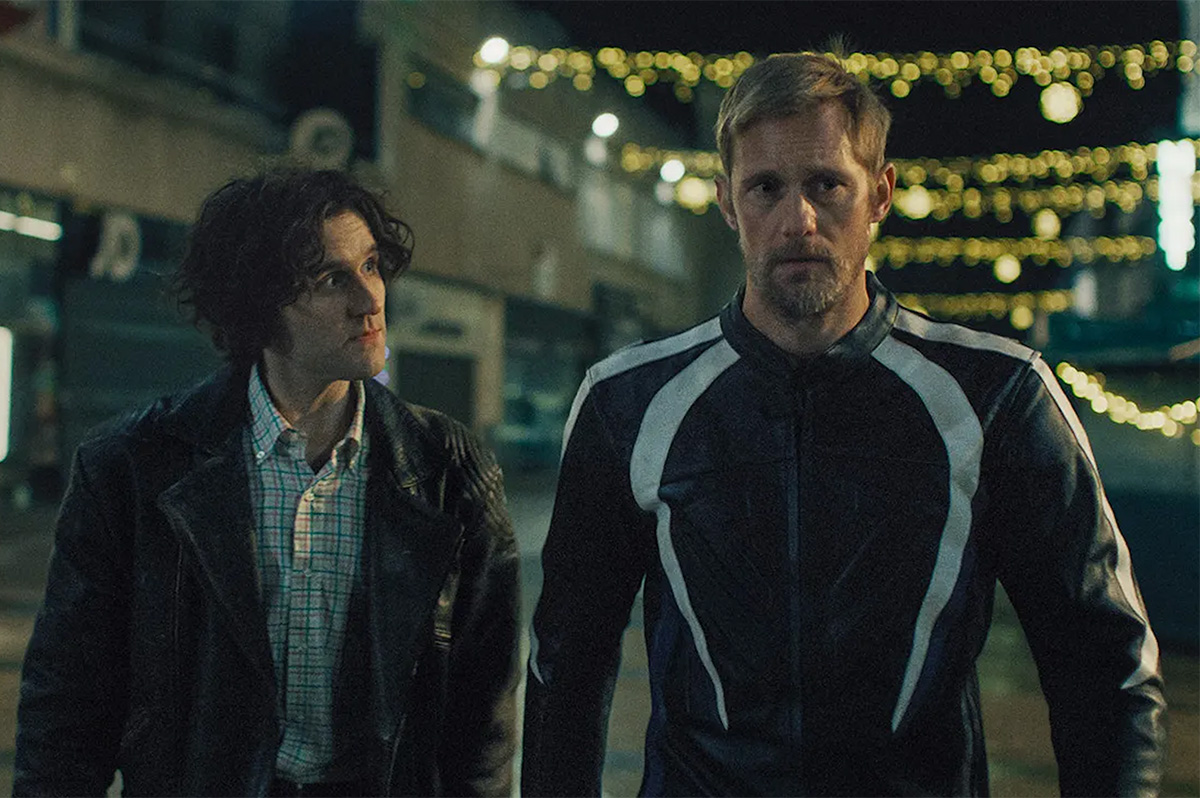
In case you didn’t know, “Pillion” – the title of debut UK filmmaker Harry Lighton’s buzzy gay “fetish rom-com” starring Scandinavian hunk Alexander Skarsgård and “Harry Potter” alumnus Harry Melling – refers to a rear seat on a motorcycle for a passenger, and the person who occupies it is said to be “riding pillion.”
That definition might be useful going into the movie’s story of an introverted gay Londoner who becomes involved with a handsome but icy biker and is introduced to the subculture of Dom/sub relationships, in that it evokes a dynamic that might be said to reflect the one that exists between its two main characters. There is nothing about Lighton’s disarmingly humorous and surprisingly sweet film, however, that seems to imply an interest in offering pat explanations or easy value judgments about the lifestyle it explores, so to think its title is meant as some kind of summation would be a mistake.
It centers on Colin (Melling), a timid parking warden who still lives with his mom and dad (Lesley Sharp and Douglas Hodge) and sings with a barbershop quartet as a hobby. After a gig singing Christmas carols at a gay bar, he catches the eye of sleekly confident Ray (Skarsgård), who gives him his phone number after a brief and thrillingly intimidating interaction. Prompted by his parents, he decides to call, leading to a steamy hookup in a back alley – and eventually, a live-in BDSM situation in which he becomes Ray’s official “sub,” catering to his every need and becoming a member of the gay biker community to which he belongs. It’s all perfectly fine with Colin, who embraces his role with pleasure; but when he begins to long for a deeper connection with the enigmatic and emotionally distant Ray, it triggers a disruption in the dynamic of their relationship, putting it to a test it may not be able to pass.
“Pillion” was already creating a stir before its prize-winning debut at the Cannes Film Festival last May, largely thanks to the highly publicized casting of Skarsgård as the leather-clad leading man in a gay BDSM romance. But near-universal critical acclaim quickly validated the buzz, turning it into one of 2025’s most anticipated movie releases – particularly, of course, for gay audiences, and especially for those who are part of the BDSM community and rarely get the opportunity to be “seen” on the screen as anything other than a lazy stereotype.
Naturally, much of that buzz has been driven by a prurient fervor, fueled by the promise of kinky onscreen sex and rumors of a notorious close-up highlighting the full-frontal assets of a certain Swedish movie star. One of the things that’s remarkable about “Pillion,” however, is that while it certainly doesn’t downplay the overt sexual aspect of the relationship at its center, it doesn’t use them to titillate or shock us. Its plentiful scenes of intimacy are sexy, yes, but they also chart the development of the characters’ bond together, expressing feelings that can only be left unspoken within their agreed-on dynamic. They advance both the story and our awareness of the characters’ psychology, and while they may occasionally provide a jolt for viewers not accustomed to seeing gay fetish sex portrayed explicitly on screen, they successfully capture the joy of the experience instead of making it feel sensationalized or lurid.
In fact, once “Pillion” ends, it’s not the sex (not exclusively, at least) that lingers in our mind; it’s the delicate balance it maintains between tension and ease, detachment and tenderness, rigidity and flow – mirroring the surging passions contained within the strictly regimented order of their power dynamic. It’s the depth of Melling’s film-anchoring performance, in which he undergoes an entire voyage of discovery that emphasizes Colin’s strength, not his timidity, and allows us to relate to him in ways that may surprise us. It’s the authenticity of the relationships between all the characters, from Sharp and Hodge’s doting parents to Scissor Sisters front man Jake Shears (in his film acting debut) as a fellow sub who ignites a spark of jealousy between Colin and Ray; most of all, it’s the way that it allows the story to move, with a slow and methodical rhythm – reflected in the measured strains of Eric Satie’s “Gymnopode No.1” that echo through Oliver Coates’ evocative score – that makes it all feel perfectly natural.
And yes, it’s also the presence of Skarsgård, who subtly (and with wry humor) contrasts tight-lipped alpha stoicism with his flawless male beauty that feels like a force of nature. We don’t know much about Ray, ever, through the dialogue in Lighton’s tersely worded screenplay, but we can draw our own conclusions from the eloquent silence that Skarsgård wraps around the character like a security blanket. Best of all, he never uses his “Dom” role in the film to overshadow Melling – it’s Colin’s story, after all, and Skarsgård’s Ray deploys a tactic of “quiet command” on him throughout without ever stealing his spotlight.
As for the film’s writer/director, Lighton manages perhaps the most delicate balancing act of all. He takes a story (adapted from a novel by Adam Mars-Jones) about someone discovering himself in the BDSM community, who engages in sexual behavior that’s likely out of the comfort zone of many viewers and enters a “romantic” partnership most people would find unacceptable, and turns it into a movie that is all about the complexities of human experience. You may not know much (or want to) about life as a sub in a BDSM partnership, but you know what it feels like to love someone, and to long for love in return; Lighton understands that “Pillion” is a story about that, and he knows how to tell it so that you will understand it, too.
That said, it’s obvious there will be many audiences out there for whom a movie about leather-clad queer fetish sex might simply be a step too far for them to take. Anyone approaching “Pillion” should be aware that, depending on your own level of familiarity – or comfort – with the BDSM lifestyle, your reaction may vary across a spectrum of perspectives; if you’ve been around it, nothing the movie shows you is likely to ruffle your feathers, and if you haven’t, well, only you know your limits.
For us, it’s a film to admire from a promising new queer director, shining a light on an insular culture within the larger rainbow community with intelligence, dignity, and a refreshing lack of the homophobic tropes that so often haunt queer movies, even when they are made by queer filmmakers themselves.
Unfortunately for Americans, while “Pillion” was released in the UK on Nov. 28, we won’t get a chance to see it until Feb. 6. With the buzz now even stronger and the stars in full “promotional” mode on the talk show circuit, we thought it would be a good idea to let you know that the wait might still be a while, but it will be worth it.
After all, as any good Dom can tell you, a pleasure withheld tastes even sweeter when it’s finally given.
Books
‘Dogs of Venice’ looks at love lost and rediscovered
A solo holiday trip to Italy takes unexpected turn
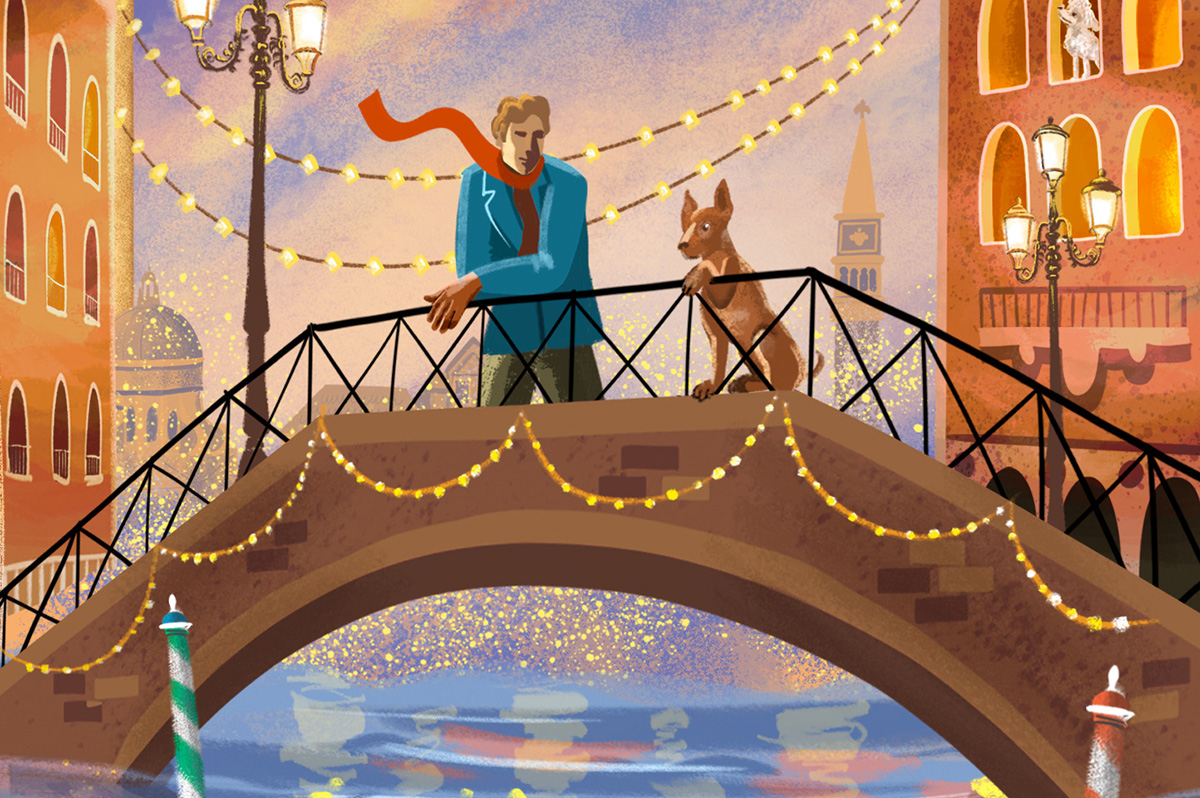
‘The Dogs of Venice’
By Steven Crowley
c.2025, G.P. Putnam & Sons
$20/65 pages
One person.
Two, 12, 20, you can still feel alone in a crowded room if it’s a place you don’t want to be. People say, though, that that’s no way to do the holidays; you’re supposed to Make Merry, even when your heart’s not in it. You’re supposed to feel happy, no matter what – even when, as in “The Dogs of Venice” by Steven Rowley, the Christmas tinsel seems tarnished.

Right up until the plane door closed, Paul held hope that Darren would decide to come on the vacation they’d planned for and saved for, for months.
Alas, Darren was a no-show, which was not really a surprise. Three weeks before the departure, he’d announced that their marriage wasn’t working for him anymore, and that he wanted a divorce. Paul had said he was going on the vacation anyhow. Why waste a perfectly good flight, or an already-booked B&B? He was going to Venice.
Darren just rolled his eyes.
Was that a metaphor for their entire marriage? Darren had always accused Paul of wanting too much. He indicated now that he felt stifled. Still, Darren’s unhappiness hit Paul broadside and so there was Paul, alone in a romantic Italian city, fighting with an espresso machine in a loft owned by someone who looked like a frozen-food spokeswoman.
He couldn’t speak or understand Italian very well. He didn’t know his way around, and he got lost often. But he felt anchored by a dog.
The dog – he liked to call it his dog – was a random stray, like so many others wandering around Venice unleashed, but this dog’s confidence and insouciant manner inspired Paul. If a dog could be like that, well, why couldn’t he?
He knew he wasn’t unlovable but solo holidays stunk and he hated his situation. Maybe the dog had a lesson to teach him: could you live a wonderful life without someone to watch out for, pet, and care for you?
Pick up “The Dogs of Venice,” and you might think to yourself that it won’t take long to read. At under 100 pages, you’d be right – which just gives you time to turn around and read it again. Because you’ll want to.
In the same way that you poke your tongue at a sore tooth, author Steven Rowley makes you want to remember what it’s like to be the victim of a dead romance. You can do it here safely because you simply know that Paul is too nice for it to last too long. No spoilers, though, except to say that this novel is about love – gone, resurrected, misdirected – and it unfolds in exactly the way you hope it will. All in a neat evening’s worth of reading. Perfect.
One thing to note: the Christmas setting is incidental and could just as well be any season, which means that this book is timely, no matter when you want it. So grab “The Dogs of Venice,” enjoy it twice with your book group, with your love, or read it alone.
The Blade may receive commissions from qualifying purchases made via this post.
a&e features
Local, last-minute holiday gift ideas
Celebrate the season while supporting area businesses
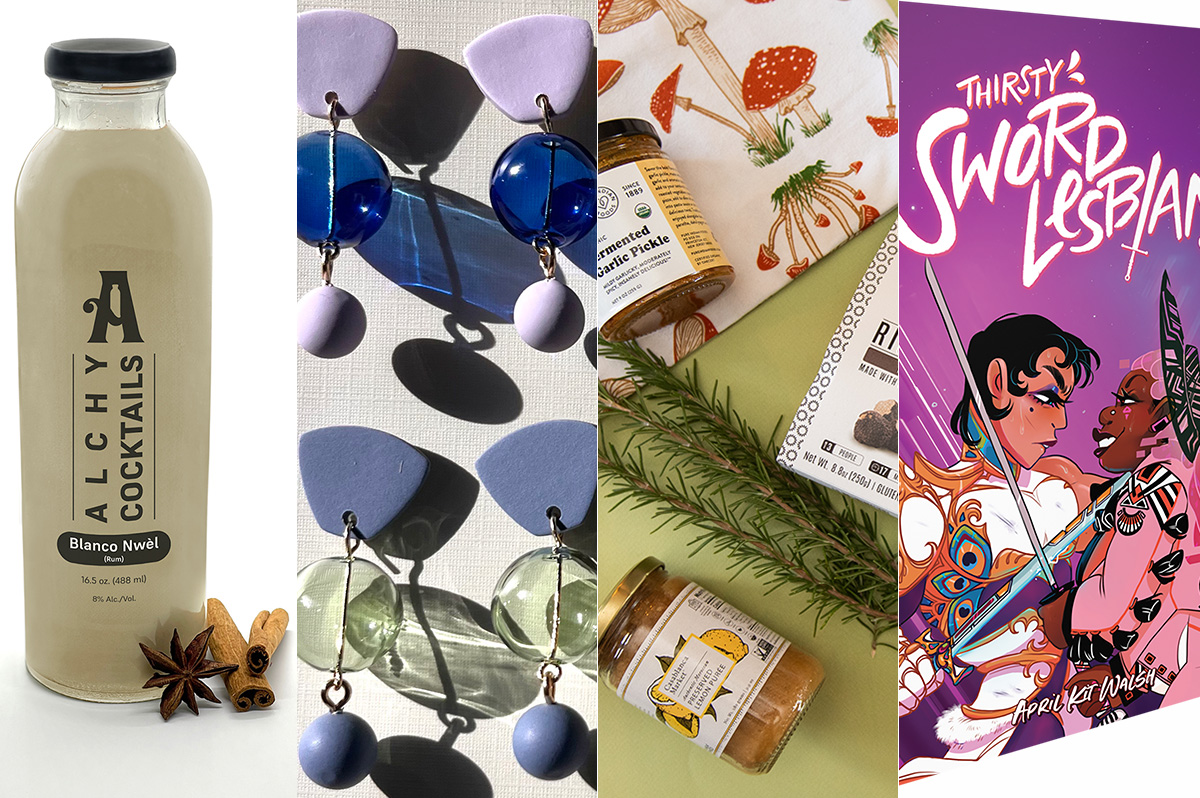
The DowntownDC Holiday Market is bustling. Union Station is decked out with its annual Christmas tree. Washingtonians have wrapped their houses and apartment balconies with festive lights and holiday decorations. The holiday season is here. And with stockings to fill and empty space under the tree, Washington’s local shops and artists have plenty to offer.
Show your LGBTQ and D.C. pride with the Washington Blade’s annual holiday gift guide.
To embrace the holiday buzz: The Blanco Nwèl cocktail from Alchy Cocktails. This Caribbean eggnog is one of Alchy Cocktail’s seasonal holiday cocktails. The flavor profile is similar to coquito, a traditional Puerto Rican Christmas drink with a coconut base. As a queer and Caribbean-owned business, Alchy Cocktails has been based out of Washington since 2021. Blanco Nwèl is available in both cocktail ($24) and mocktail ($12) online and at a variety of holiday markets, including the Tingey Plaza Holiday Market, the Flea Market at Eastern Market, Union Station’s Main Hall Holiday Market, and more. ($24)
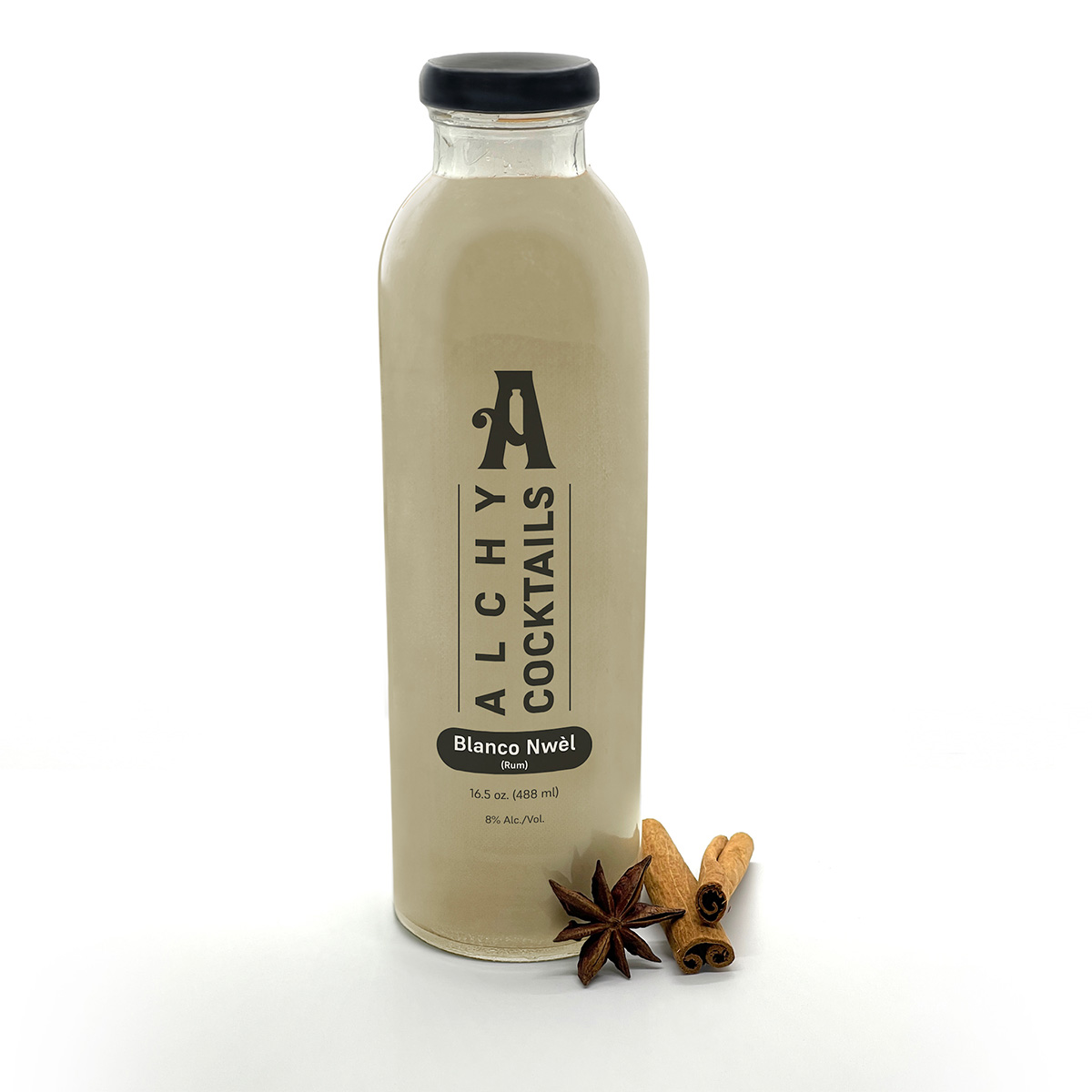
A spicy bite: Gordy’s Cajun Okra from Salt and Sundry. These spicy, tangy pickles pull on Southern Cajun-style flavors, packing a punch with paprika, cayenne, and more. Gordy’s is an LGBTQ-owned and Washington-based brand, making this gift an opportunity to support a local LGBTQ business straight from the jar. This pantry staple is available on Salt & Sundry’s website and at its locations in Union Market, Logan Circle, and its Georgetown holiday pop-up store. ($14)
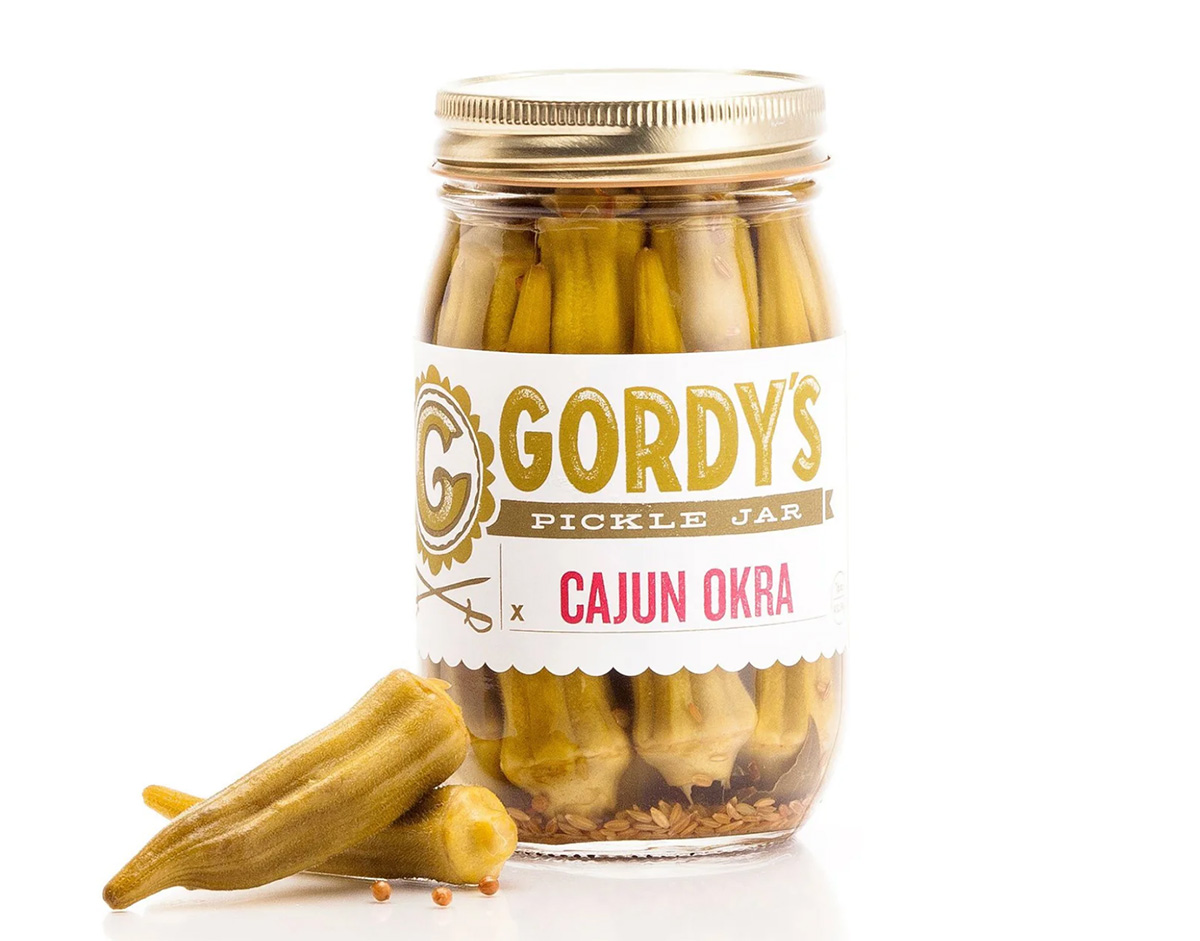

To celebrate Washington pride: The DC Landmark Tote Bag from The Neighborgoods. Native Washingtonians, visitors, friends and family alike will find something to love about this Washington-themed tote bag. Food trucks, the 9:30 Club, the Metro logo and pandas from the National Zoo are just some of the city’s landmarks depicted across the tote in a red, white, and blue color palette. The tote is a part of the DC Landmarks collection, which donates 10 percent of its sales to the American Civil Liberties Union. The Neighborgoods itself is a local, woman-owned business built out of a passion for screen-printing in 2013. The 100 percent cotton canvas tote is for sale online or at the DowntownDC Holiday Market. ($22)
To give friends and family their flowers: The Flowers Bandana from All Very Goods. This 100 percent cotton bandana was designed in Washington and hand printed in India. Its uniqueness comes in being covered with the faces of Black women, representing a “love letter to all women but especially Black women,” according to All Very Goods. The Black woman-owned and operated business, based out of Northwest Washington, has a mission to celebrate diversity and representation through its products. The bandana intends to give Black women their “flowers.” The Flowers bandana is available for purchase online. ($24)

To unlock culinary creativity: The Curious Chef Gift Collection from Each Peach Market. This customizable collection of kitchen oddities — ranging from tinned fish to chili oil — is a quirky gift for the most inventive chefs. The collection is available in a Standard Santa, Extra Goodies and Super Holiday Size for up to $165. The Washington-based market, founded in 2013, permits customers to make the collection special by specifying what unique ingredients are packaged, including products made by local or LGBTQ brands. Each Peach Market offers assembly and pick up in-person at its Mount Pleasant shop and also offers local delivery and nationwide shipping via its website. ($85)

To give a touch of sweetness: The DC Landmark Chocolate Covered Oreo Holiday Cookies from Capital Candy Jar. Wrapped in a festive red bow, this box of nine cookies embraces love for Washington and the holiday season in one. Among the dark and milk chocolate covered cookies are images of the U.S. Capitol, the White House, the Lincoln Memorial, the Jefferson Memorial and festive hollies. The treat, packaged in a Hill East facility just a few blocks from the Capitol, is available for purchase online and at the DowntownDC Holiday Market. ($23.95)
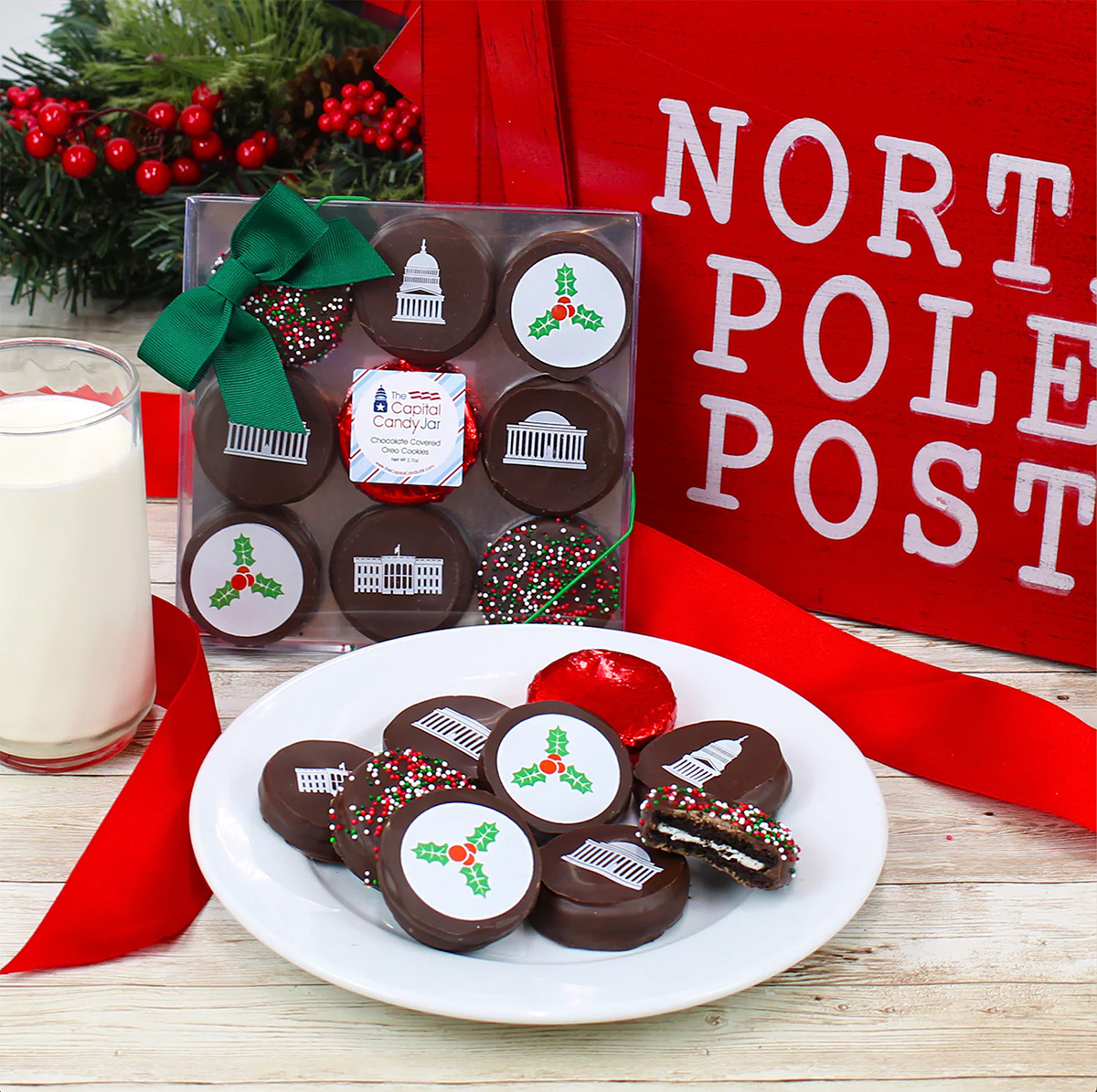
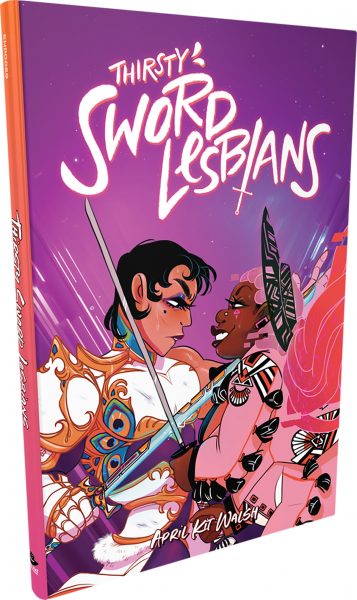
To celebrate queer gaming: Thirsty Sword Lesbians from Labyrinth Games & Puzzles. This roleplaying game embraces lesbian culture by unlocking a world of swords, romance, and battle. Ideal for group settings, the book presents a system of world building and character identities that are best brought to life by creative minds. Labyrinth, which has been a local Washington business for more than 15 years, celebrates non-digital fun through games and puzzles that connect the community. This gift is offered online and at Labyrinth’s Capitol Hill location. ($29.99)
To make a bold statement: The “Resist” T-shirt from Propper Topper. This locally screen-printed black tee features the Washington flag designed within a raised fist, symbolizing both Washington pride, and political resistance. The shirt is made exclusively by Propper Topper, a local Washington business that evolved from a hat shop to a gift store since opening in 1990. The tri-blend unisex shirt is available both for pickup at Propper Topper’s Cathedral Heights location and shipping via the online site. ($32)
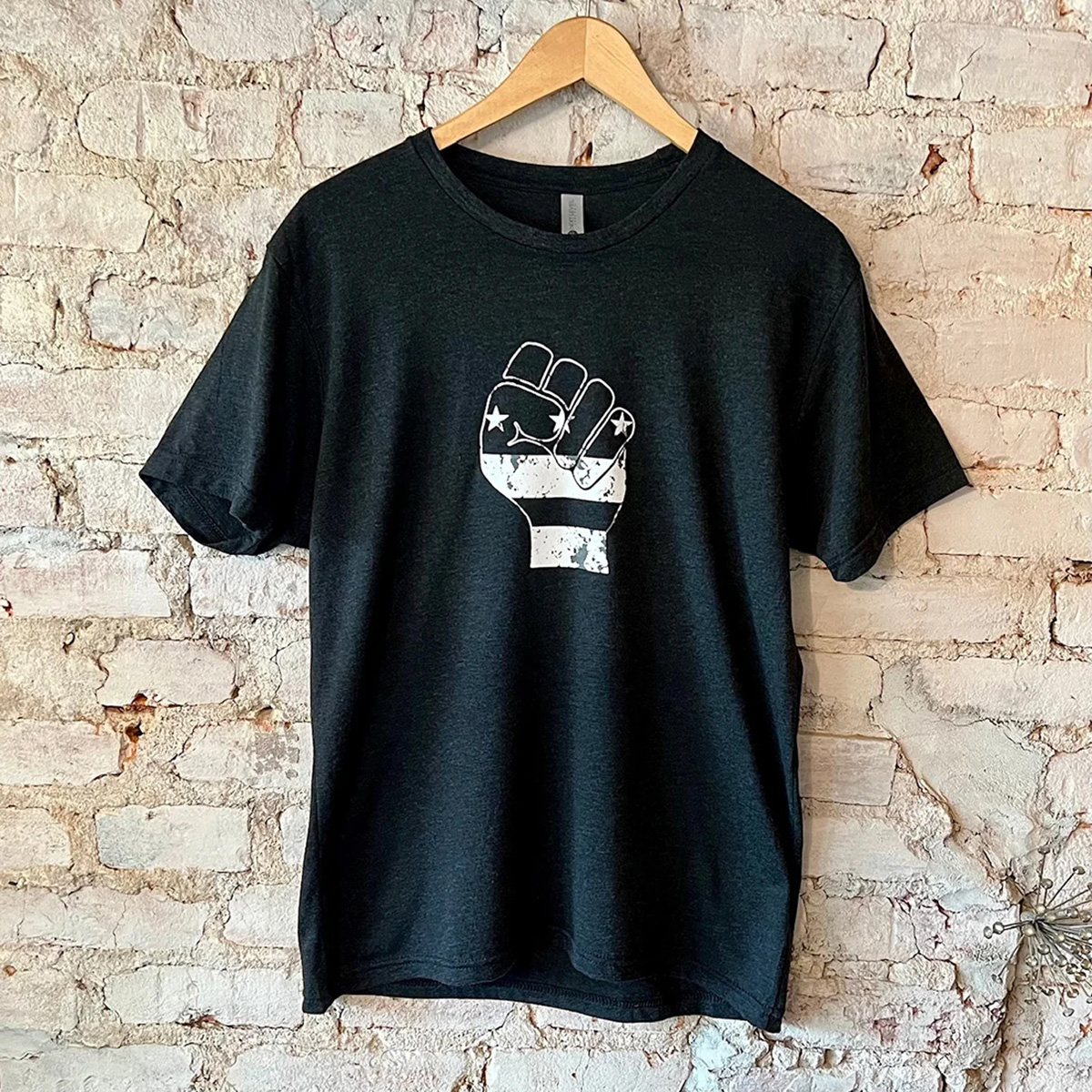
To keep it c(g)lassy: The Glass Ball earrings from Blue Moon Aquarius. Gifting can rarely go wrong when it comes to a new pair of earrings. The unique statement earrings — made of polymer clay, glass, and 18k gold plating over surgical steel — are hand cut, sanded and assembled in Washington, meaning each set is unique. Blue Moon Aquarius, a local brand, is known for its small batch jewelry and home decor designed with clay materials. Available in oxblood, hunter green, lavender, and bluestone color palettes, these earrings are available for purchase on Blue Moon Aquarius’ website and at the DowntownDC Holiday Market. ($48)
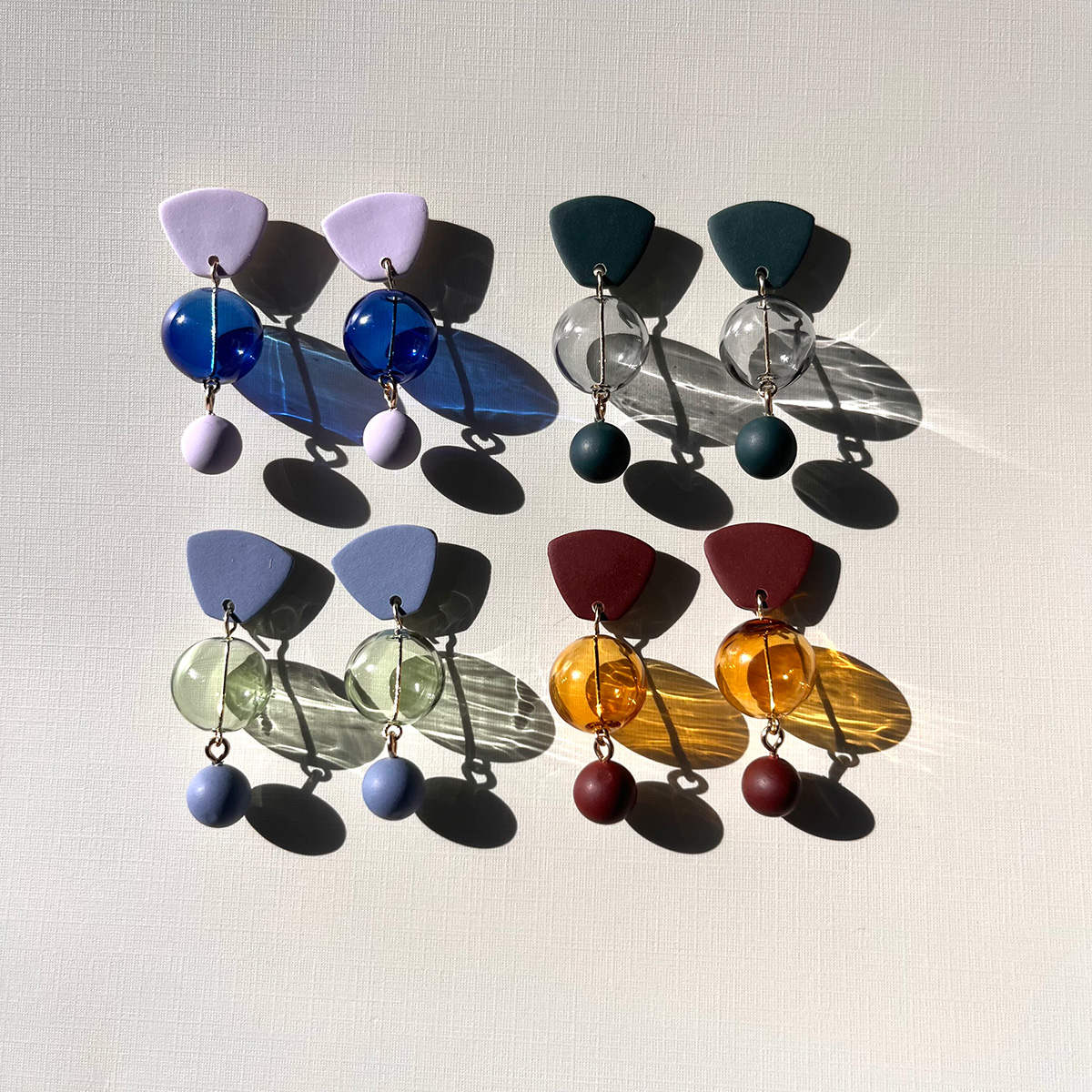
To elevate a holiday tea or charcuterie party: The Honey Flight: Tea Lover’s Selection from BannerBee. This local honey company presents the ideal gift to make cozying up with a cup of tea slightly more special. The Honey Flight contains three types of raw wildflower honey infused with fair trade Ugandan vanilla bean, chai spices, and locally sourced lemon thyme herb. The gift is also an opportunity to uplift a family company based in the Mid-Atlantic that offers all-natural, sustainable products. The flight is available online, at the DowntownDC Holiday Market or at the Arlington Courthouse and Dupont Farmers’ Markets. ($36)

For Baltimore shoppers: If you’re in Charm City, don’t miss Balston Mercantile, opened by a gay couple in June. Their gorgeous shop in the Hampden neighborhood offers an array of unique, upscale finds, from barware and artwork to cookbooks and home decor and more. (849 W. 36th St.)





